Want to analyze competitors backlinks to improve your SEO? This guide will detail the best strategies and tools to find, evaluate, and replicate them. Learn how your competitors’ backlinks can unlock new opportunities for your site. Let’s dive in.
Key Takeaways
- Competitor backlinks are key for SEO and understanding them can reveal new link-building opportunities and strategies.
- Using both free and paid tools, like Ahrefs and SEMrush, can enhance your analysis of competitors’ backlinks, helping you to identify valuable link sources.
- Evaluating the quality and relevance of backlinks, along with proactive strategies like outreach and addressing broken links, is essential for building a strong backlink profile.
Understanding Competitors Backlinks

Links from external sources that lead to your competitors’ sites are known as competitor backlinks. These links play a significant role in search engine optimization, essentially serving as recommendations for your rivals’ online content and enhancing their standing within search engine results pages (SERPs). Even into 2024, these backlinks continue to be pivotal elements considered by Google’s ranking algorithm, making them essential components for boosting SEO rankings and attracting organic website traffic.
Delving into the analysis of your competition’s backlink profile offers valuable insights. This process enables you to uncover fresh opportunities while grasping which link-building tactics are effective within your sector. Scrutinizing the range of websites linking to competitors can reveal weaknesses in your own approach and open up potential pathways toward successful link acquisition.
By gaining an understanding of where your competitors acquire their links, you fortify your own strategy for building connections. To optimize this aspect of digital marketing thoroughly, it’s imperative that one undertakes steps such as finding out where competitor backlinks originate from, conducting thorough analyses on those links or engaging in detailed assessments regarding how they contribute through strategic means — all with an eye towards enhancing competitive positioning vis-à-vis others’ web presences based on intelligent observation coupled with informed action when considering similar endeavors yourself.
How to Find Competitors Backlinks

Initiating a search for your competitors’ backlinks begins by determining the primary keywords for which they rank. Referred to as competitor backlink analysis, this method involves identifying and investigating the external websites that are linking to your rivals in order to uncover potential new link-building opportunities. A detailed competitor analysis can reveal valuable sites that might be inclined to link out to your content.
Following the pinpointing of these competitors, various tools come into play for extracting information about their backlink profiles. There exists an array of such utilities from free versions providing basic overviews like SE Ranking’s Backlink Checker or Bing Webmaster Tools, up through sophisticated paid platforms.
Conversely, investing in premium resources such as Semrush’s Backlink Analytics will afford you comprehensive insights coupled with advanced filtering features essential for enhancing your overall strategy when it comes to building links.
Using Free Backlink Checkers
Utilizing free backlink checkers is an excellent first step in conducting a competitor backlink analysis. Platforms such as SE Ranking’s Backlink Finder enable you to input the domain of your competition and gather information regarding their aggregate number of backlinks, associated referring domains, and principal backlinks. These instruments afford a rudimentary grasp on the origins of your competitors’ backlinks while assisting in spotting potential opportunities for developing links to enhance your own website.
These complimentary resources have their limitations. For example, with Bing Webmaster Tools at your disposal, it’s possible to implement filters like ‘Show domains not linking to my site,’ which aids in discovering unique prospects for acquiring new links. Should you require more detailed assessments and sophisticated capabilities though, investing in premium tools may be necessary.
Leveraging Paid Tools for Comprehensive Analysis
Utilizing paid tools can significantly enhance the thoroughness and detail involved in analyzing a competitor’s backlinks. A prime example is the Site Explorer from Ahrefs, which furnishes an exhaustive Backlinks report that catalogs every single link directed at your competitor’s site. This analysis facilitates a deep dive into each backlink’s quality and relevance, offering insights into how competitors are shaping their backlink strategies.
With SE Ranking’s updated backlink database in April 2024, users gain access to current and precise data on backlinks, which provides them with a competitive edge. Ahrefs features filters for language and traffic when reviewing backlinks—this precision aids in creating more focused link-building efforts tailored to specific audience segments or regions.
The rich functionalities offered by these premium instruments are vital components of any comprehensive and successful link building strategy. They empower you with sophisticated resources necessary to execute a high-caliber analysis of competitors’ backlink profiles effectively aiding your own link building campaigns.
Evaluating Competitor Backlinks

After collecting information about your competitors’ backlinks, it’s essential to assess their quality. The value of backlinks varies greatly depending on their trustworthiness, authority, and relevance. Understanding which ones are advantageous and which could potentially harm your SEO is key by evaluating these attributes.
Scrutinizing the placement of links and the relevancy of domains where they appear is crucial. This analysis will pinpoint the high-quality backlinks that play a significant role in your competitors’ SEO achievements. Such thorough scrutiny aids in shaping your link-building strategy and directs you towards securing valuable backlinks for yourself.
Assessing Link Quality
Evaluating the strength of backlinks necessitates consideration of multiple crucial elements, including the authority possessed by the linking domain, how relevant its content is, and where within that content your link is situated. Receiving high-quality backlinks from domains that are both authoritative and relevant to your niche can lead to substantial improvements in search engine optimization (SEO). On the other hand, acquiring links from dubious or unrelated websites might detract from your site’s trustworthiness and negatively affect its ranking.
Tools such as Ahrefs and SEMrush offer valuable metrics like Authority Score which assist you in gauging how backlinks may influence your SEO endeavors positively or negatively. Delving deeper into an analysis of what type of material resides on pages containing inbound links to you—and scrutinizing anchors reports—can uncover passively accumulated links. These insights help shape a robust backlink strategy essential for elevating online visibility.
Analyzing Link Placement
The strategic positioning of links in content significantly influences the performance of backlinks. Links that are situated closer to the top of a piece tend to receive more attention through clicks and offer greater visibility. Embedding links naturally within pertinent content also elevates their worth and bolsters engagement from users.
In scrutinizing the backlinks used by competitors, it is important to identify those which are strategically embedded within the text in a way that feels integral to the material. Such placements not only heighten their prominence, but also amplify both relevance and authority attached to these backlinks.
Checking Domain Relevance
Domain relevance is another critical aspect of backlink quality. Backlinks from domains that are relevant to your niche provide maximum SEO benefits. When evaluating a link prospect, consider whether the link appears natural within the content and aligns with your industry.
Reaching out to sites that link to multiple competitors can be a strategic move, as these sites are likely to be relevant to your niche and open to linking to your content as well. Ensuring domain relevance helps build a strong and credible backlink profile that enhances your site’s authority and search engine rankings.
Replicating Competitors Backlinks

Mimicking the backlink profiles of your rivals is a potent strategy for enhancing your own backlink profile and boosting search engine optimization. Through scrutiny of competitors’ backlinks, you can pinpoint possible venues for acquiring new links and spot weaknesses in their approaches that may be leveraged. The method entails singling out links that can be duplicated, crafting content of superior quality, and engaging in outreach to secure link building.
Beyond just copying the exact same links, it’s crucial to engage in various effective link-building tactics to gain an advantage against your competition. This holistic tactic assures not simply equalling but surpassing the backlink profiles maintained by your competitors.
Identifying Replicable Links
Examining the backlink profiles of competitors and focusing on securing high-quality backlinks for your own website is a crucial step in identifying links that can be replicated. Be sure to seek out a range of sources for these valuable backlinks, steering clear of any low-quality links which could negatively affect your SEO efforts.
After pinpointing the most valuable backlinks from this process, treat them as potential business partners and look into strategies for acquiring similar quality links. This may include improving upon content or offers currently linked to by your competitors or emulating their success with guest posts by contacting the same websites they have used.
Creating Superior Content
Generating superior content that eclipses the competition is crucial in securing high-quality backlinks. Content enriched by comprehensive, structured information and augmented with visuals such as infographics or charts can considerably bolster its attractiveness and potential to earn backlinks.
Content forms known to garner more backlinks include industry analyses, case studies, and complimentary resources. Crafting top-notch guest posts that resonate with readers while showcasing your authority can serve as a potent method for obtaining valuable backlinks.
Outreach for Link Building
Outreach plays an integral role in the execution of a link building strategy. Once potential backlink opportunities have been pinpointed, developing a strategic outreach initiative is essential. This process includes contacting websites that currently link to your competition with the goal of harnessing these existing relationships to benefit your own web presence.
To ensure successful outreach, it’s important to convey genuine enthusiasm and provide tangible benefits for those you’re contacting. Customizing your emails can demonstrate personal attention. Express authentic praise where appropriate, and showcase what makes your content superior or complementary. Utilize structured email templates designed for proposing updates on links when reaching out to website administrators about modifying their current links.
Advanced Link Building Tactics

Individuals aiming to elevate their link building initiatives can gain an advantage by employing sophisticated strategies. Such tactics encompass keeping an eye on new mentions of competitors, focusing on sites that link to various competitors, and identifying as well as substituting broken links.
Utilizing these approaches allows you to forge more robust connections with websites that link out to your competition and obtain valuable backlinks which bolster the standing and search engine rankings of your site.
Monitoring Competitors’ New Mentions
Keeping an eye on recent references to your rivals can unveil new opportunities for acquiring backlinks. Utilizing platforms such as Google Alerts and Buzzsumo gives you the ability to monitor when competitors’ brands are mentioned, revealing potential but possibly overlooked prospects for backlinks.
By vigilantly observing these mentions, you have the advantage of moving swiftly to obtain backlinks before others in your field do. Adopting this forward-thinking strategy guarantees that you capitalize on advantageous opportunities for link building without letting them slip through your grasp.
Targeting Multiple Competitors’ Linking Sites
By concentrating on websites that provide inbound links to several of your competitors, you boost the likelihood of securing substantial backlinks. Such sites are familiar with adding links relevant to your industry, which identifies them as ideal candidates for contact.
Directing your outreach towards these particular websites places your content advantageously among pre-existing relationships, thereby improving both your backlink profile and search engine optimization efforts.
Finding and Replacing Broken Links
Acquiring new backlinks can be efficiently achieved through a strategy known as broken link building, which entails spotting non-functioning links on rival websites and proposing your content as an apt substitute.
Not only does providing alternative content for defunct links aid in gaining fresh backlinks, but it also elevates the credibility of your site and augments user experience. This mutually advantageous method profits both the website that hosts the linking and the stature of your own backlink profile.
Measuring Success
It is essential to assess the effectiveness of your backlink strategy for continued advancement. Utilize Key Performance Indicators (KPIs) like the quantity of active links obtained, rates at which responses are received, and the volume of organic search traffic as measures to determine how successful your approach has been.
Persistently track these indicators and fine-tune your tactics based on their outcomes. This will bolster your endeavors in acquiring new backlinks, ensuring you keep an edge over competitors within your specific field.
Tracking Acquired Backlinks
Monitoring the backlinks you’ve secured is crucial to gauge their effect on your search engine optimization (SEO) strategy. Utilizing SEO tools such as Ahrefs, SEMrush, and Google Analytics can aid in tracking both the acquisition and effectiveness of these links, offering clarity on how they contribute to elevating your positions in search engine results pages (SERPs) and increasing web traffic.
To ascertain that your link-building endeavors are successful and correspond with your objectives, it’s important to regularly assess how these acquired links influence organic search traffic along with their impact on overall SEO performance.
Analyzing Traffic and Rankings
Evaluating the influx of visitors and search results is vital to determine how well your backlink strategy performs. When other websites refer users to yours, it often signifies that your acquired backlinks are of high quality, especially when there’s an uptick in website traffic. Utilizing platforms such as Google Analytics is beneficial for monitoring the organic search traffic that results from your endeavors in building backlinks, offering a clearer view into the ways these links contribute to increased site visits.
Keeping tabs on keyword positions and organic online presence plays a key role. Instruments like Google Search Console can supply crucial figures about click-through rates and visibility metrics which allow you to gauge the effectivity of your backlinks concerning how prominently your website appears in search engine queries.
Integrating knowledge gained from tracking organic visitation numbers, keyword placement performance, and user interaction data delivers a comprehensive understanding of just how impactful your backlinks are. This fusion allows for informed decision-making processes regarding enhancements tailored specifically towards optimizing future strategies related to acquiring new or bolstering existing backlinks.
Refining Your Strategy
It is essential to consistently evaluate your backlink strategy through performance indicators for sustained achievement. By conducting frequent examinations of your backlink profile, you can pinpoint high-quality links that boost your SEO and shape subsequent link-building activities. Tailoring your approach by considering the significance and pertinence of websites that provide inbound links to your content makes certain that you are persistently enhancing and refining your methodology for building links.
Taking a proactive stance and implementing modifications based on empirical data helps preserve an edge over competitors, guaranteeing that your strategy for acquiring backlinks stays potent and in harmony with the objectives of your SEO endeavors.
Summary
Harnessing the power of your competitors’ backlinks can significantly boost your website’s SEO and provide a strategic advantage. By examining these backlinks, you unlock opportunities for link building, sharpen your own tactics, and climb up the search engine rankings ladder. The process involves analyzing competitor links to find replicable ones, crafting content that outshines theirs, and engaging in targeted outreach initiatives to forge a robust backlink profile.
It’s important not to become complacent once you’ve secured new backlinks. Ongoing assessment of how these efforts are impacting your performance is essential for sustaining success over time. Staying vigilant by continuously optimizing based on insights from data ensures that your strategy remains potent and effectively propels desirable outcomes in search engine standings.
Frequently Asked Questions
What are competitor backlinks?
Competitor backlinks are links from other websites that point to your competitors’ sites, helping them rank better in search engines. They’re like votes of confidence for their content, which can influence your own SEO strategy.
How can I find my competitors’ backlinks?
Utilizing tools such as SE Ranking’s Backlink Finder at no cost, or opting for more detailed services like Ahrefs and Semrush with an investment, allows you to uncover the backlinks that your competitors have established.
These instruments provide crucial details regarding the composition of their backlink profiles!
What factors determine the quality of a backlink?
The quality of a backlink primarily hinges on the authority of the linking domain, the relevance of the content, and where the link is placed.
So, aim for backlinks from reputable, related sites to enhance your SEO effectively!
How can I replicate my competitors’ backlinks?
You can replicate your competitors’ backlinks by analyzing their backlink profiles to find high-quality links and then create even better content.
After that, reach out to those same websites with your offers for guest posts or collaboration.
How do I measure the success of my backlink strategy?
In assessing the effectiveness of your backlink strategy, concentrate on crucial performance metrics such as the count of active links, rates of response, and organic search traffic.
Employing platforms like Ahrefs, SEMrush, and Google Analytics can provide you with transparent evaluations regarding your backlinks’ success.




